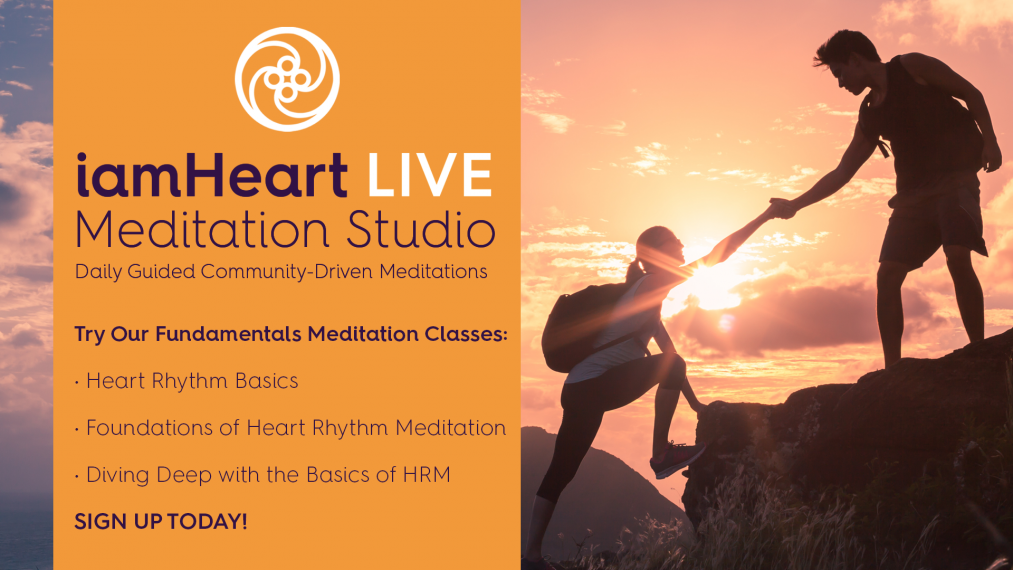How HRM Affects You Physically

Self-Regulation Through Heart Rhythm Meditation
The essence of Heart Rhythm Meditation is the integration of your breath and heart. Focusing on your heart rate brings attention to your physical heart, then controlling your breath brings energy to your heart. With your two fundamental rhythms, heartbeat and breath rate, are coordinated (entrained), your heart goes into its most efficient state, coherence, and your body, mind and heart work together. Modern life places demands on our bodies, hearts and minds that require us to adapt. We are pushed beyond what our body’s natural mechanism of homeostasis can accommodate, requiring us to be active participants in regulating our internal rhythms and processes. Self-regulation cannot be done by the mind alone. The nervous system is largely controlled by unconscious processes. Fortunately, there is a way to have a high degree of influence over the nervous system and its effect on the internal organs through Respiratory Sinus Arrhythmia (RSA). RSA is the process by which the breath rhythm affects, and even controls, the nervous system and thereby the heart rate and the action of the pancreas, liver, stomach and intestines. Heart Rhythm Meditation is designed to have the greatest possible effect through RSA. Control your breath and you control the autonomic nervous system. In the practice of Heart Rhythm Meditation, you will become an expert in breathing for:- The optimum oxygenation of tissues and reduction of inflammation
- The optimum pH of the blood stream, for better energy
- Increased Heart Rate Variability (HRV), which reduces cardiac stress
- Increased “Vital Capacity,” the breath volume, for more energy
- Improved posture, to help spine and neck issues
- Improved immune response, by energizing the thymus gland.
The way Heart Rhythm Meditation affects your body chemistry is best explained in this video by Dr. Charles Palmer of the neonatal department at Penn State University:
In the above video Dr. Charles Palmer, MD, describes how your emotional state and your physical state aren’t separate and how improving your emotional state can have a direct effect on our health and physical wellbeing. He refers to research by Candace Pert, a scientist who did ground breaking work on psychosomatic wellness and the relationship between our emotional state and physical state. There are a growing number of studies showing How Positive Emotions Build Physical Health.
Dr. Charles Palmer explains that our nervous system is bathed in a sea of peptides, molecules and chemicals which are constantly affected by the emotional state we’re in. Most of us are victims of our emotional state — we are boats floating in a sea that may change from sad to happy or stressed to calm at a moment’s notice. For many people the boat is rudderless, but Charles Palmer proclaims that with Heart Rhythm Meditation we can become captains of this ship, or “captains of our emotional marinade,” as he puts it.
Having a well-mixed marinade for our nervous system to inhabit improves our vagal tone. Good vagal tone has been connected with:
- Lowering inflammation
- Improvement in chronic pain
- Amicability or Decreased Aggression
- Reduced Anxiety
- A Clearer Mind
- An energy boost, or fatigue reduction
- Heart Arrhythmia Improvement
- Reducing IBS (Irritable Bowel Syndrome)
- B12 Nutrition
- Weight Loss
So Heart Rhythm Meditation makes you feel better and feeling better helps your vagal tone, but Heart Rhythm Meditation helps in a second, much more direct and visible way: HRV improvement. Heart Rate Variability is the best indicator of vagal tone. Heart Rhythm meditation creates an immediately visible change in your heart rate variability. Below is a graph of someone who had never meditated before. The meditation begins just after the minute and a half mark. This first time meditator immediately improved the regularity of their heart beat. Regular Heart Rhythm Meditation has shown drastic improvements in Heart Rate Variability even after the subjects discontinued regular practice. (source)


